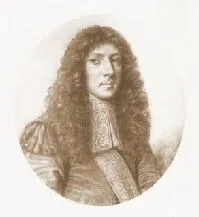Brief Lives: Biographies from Early Modernity
Contribute a brief life of an individual you have come across in your research, and (for students) be paid for your efforts- see how to do it here!

John Aubrey’s ‘Brief Lives’ were lively, gossipy pen portraits of seventeenth century figures. An avid collector of knowledge (and it is no coincidence that he was an early member of the Royal Society), Aubrey’s magpie mind promiscuously mixed anecdote with fact. His friend and fellow biographer Anthony Wood memorably described him as ‘a shiftless person, roving and magotie-headed, and sometimes little better than crazed. And being exceedingly credulous, would stuff his many letters [to me] with fooleries and misinformations, which would sometimes guide him into the paths of errour’. The resulting biographies, not published until 1813, are more like working notes than polished portraits but, for all their incompleteness and partialities, provide invaluable detail and (sometimes scandalous) hearsay about the personal characters, remarks and foibles of his contemporaries. His subjects were both famous men, such as the philosopher Thomas Hobbes, but also individuals – mathematicians, scientists, clergymen, statesmen, artists, astrologers, writers and others, women as well as men - who are far less well known today. Aubrey had a talent for recording the unusual, personal and surprising about well known individuals but also sketched pen portraits of those who might otherwise have disappeared from the historical gaze. And he had a natural curiosity about everything about him. All this makes him ideal as the inspiration for another formless publication, an electronic Brief Lives, which seeks to emulate his desire to recover the unknown and offer short accounts of aspects of the lives of the famous that have not made it into the standard biographies or which seek to rescue an interesting individual from obscurity.
Aubrey published only one item during his lifetime, Miscellanies (1696). The title-page's list of topics conveys Aubrey's interest in the supernatural and superstitious (which he found compatible with his interest in science and which also sharpened his interest in antiquities, including the stone circle at Avebury in his native Wiltshire): I. Day-Fatality II. Local-Fatality. III. Ostenta. IV. Omens. V. Dreams. VI. Apparitions. VII. Voices. VIII. Impulses. IX. Knockings. X. Blows Invisible. XI. Prophesies. XII. Marvels. XIII. Magick. XIV. Transportation in the Air. XV. Visions in a Beril, or Glass. XVI. Converse with Angels and Spirits. XVII. Corps-Candles in Wales. XVIII. Oracles. XIX. Exstasie. XX. Glances of Love, of envy. XXI. Second-Sighted-Persons. The work includes many anecdotes drawn from Aubrey's own experiences and observations, together with biographical details of others to enrich his collection of stories, as this downloadable extract from the chapter on Omens shows.
Click for the text of Andrew Clarke’s scholarly (though incomplete) edition of Aubrey’s Brief Lives Brief Lives
For an Oxford-based project to digitise Aubrey's letters see http://www.history.ox.ac.uk/cofk/project-1/john-aubrey
For Aubrey and the knowledge culture of the period see Michael Hunter, John Aubrey and the Realm of Learning (1975)
For Aubrey’s relationship with Samuel Hartlib, the mid-century reformer, see Samuel Hartlib and Aubrey
MK
